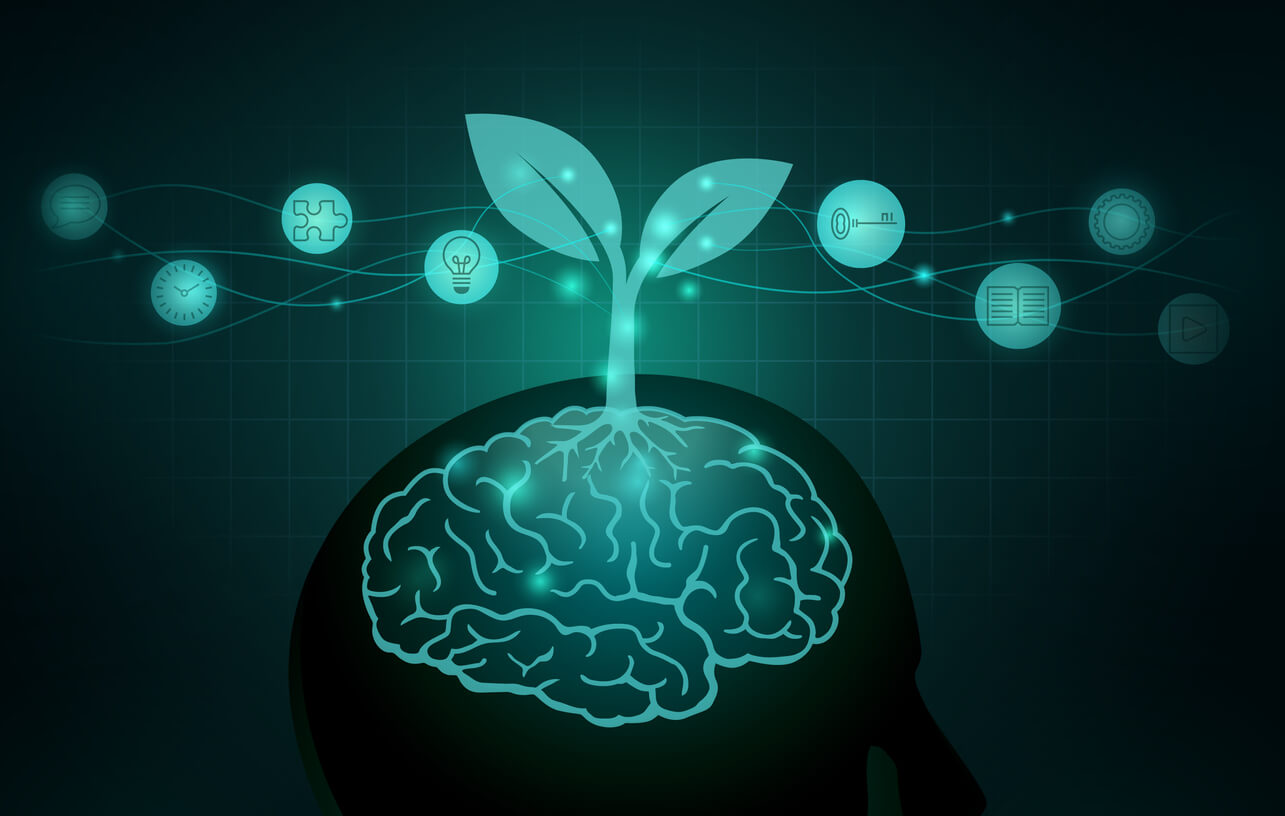Understanding the Adolescent Brain: 7 Interesting Facts


Written and verified by the psychologist Mara Amor López
The brain is one of the most important organs and has complex functioning. It’s central to all nervous system activity and is what allows us to learn, process all the information we get through our senses, and coordinate all the responses of our body to these stimuli. When it comes to adolescents, the brain is in a major stage of development. Are you interested in understanding the adolescent brain? Keep reading to discover 7 interesting facts!
According to each person’s age, the brain may have a different function due to cognitive impairment that it suffers with the passing of time. In adolescents, it’s in full maturation and is more resistant than in other stages of life.
Understanding the adolescent brain
The brain begins its development from week 5, approximately, and has crucial periods, such as childhood and adolescence. In these stages, the networks of neuronal connections between different areas increase, and it’s during adolescence when it’s totally remodeled to adapt to its environment and be prepared to face the rest of its life as an adult.
Adolescents can do more difficult things and understand deeper issues than when they were children. Most of the time, they exhibit emotional ups and downs and risky and unpredictable behaviors. All this is normal and is part of their brain development.
Interesting facts about the adolescent brain
There are very important changes in the brain during adolescence. We’ll tell you some interesting facts about this stage in the paragraphs below.

1. The brain stops growing but continues to mature
When the brain stops growing, it doesn’t stop maturing and developing until the age of 25 or 30. The prefrontal cortex takes the longest to mature. This area is responsible for impulse control, prioritization, and planning. In adolescence, because it’s still developing, adolescents are more likely to engage in risky behavior without considering the consequences of their decisions.
2. Brain size peaks in early adolescence
In girls, the brain reaches its maximum size around the age of 11, while in boys, it does so around the age of 14. But, be careful, this difference has nothing to do with having higher or lower intelligence.
3. Some mental disorders appear during adolescence
All the changes that occur in the brain, along with emotional, physical, and social changes, can make adolescents more prone to mental health problems. This makes young people more vulnerable to disorders such as anxiety, depression, eating disorders, bipolar disorder, or schizophrenia.
4. They need more sleep than children and adults
Adolescents have higher blood melatonin concentrations at night, which fall later in the morning than in children and adults. This may explain why young people often stay up late at night, and then find it difficult to wake up in the morning. Despite the fact that they should be getting 9 to 10 hours of sleep a day, most fail to meet this mark. This lack of sleep can cause them to be inattentive, impulsive, and more irritable.

5. Teenagers’ brains are more sensitive to stress
Teenagers’ brains are still developing, which is why they may have a different response to stress than adults. This can affect their mental health and cause them to develop stress-related disorders such as depression and anxiety. Mindfulness can be a technique to help them cope with these illnesses, as it consists of focusing on the present moment and paying mindful attention.
6. The brain in adolescence is ready to adapt and learn
Childhood is a stage in which the brain has great plasticity. In adolescence, it retains this characteristic, which makes it able to adapt to its environment to respond to it and continue learning. Academic activities, creative activities, mental challenges, or physical exercise are all beneficial to help the brain in its development.
7. The adolescent brain is strong
Like adolescence, it’s a stage full of changes that make the brain more prone to certain disorders. In any case, the vast majority of young people reach adulthood without any mental problems.
When it comes to understanding the adolescent brain, we can say that…
As you’ve seen in this article, the adolescent brain isn’t yet fully developed, so these young people face continuous changes that they have to deal with to adapt to their environment. They can often find themselves in risky situations, precisely because they don’t have enough experience and their brain hasn’t fully matured.
Keeping these issues in mind can help parents understand their teenagers a little better.
The brain is one of the most important organs and has complex functioning. It’s central to all nervous system activity and is what allows us to learn, process all the information we get through our senses, and coordinate all the responses of our body to these stimuli. When it comes to adolescents, the brain is in a major stage of development. Are you interested in understanding the adolescent brain? Keep reading to discover 7 interesting facts!
According to each person’s age, the brain may have a different function due to cognitive impairment that it suffers with the passing of time. In adolescents, it’s in full maturation and is more resistant than in other stages of life.
Understanding the adolescent brain
The brain begins its development from week 5, approximately, and has crucial periods, such as childhood and adolescence. In these stages, the networks of neuronal connections between different areas increase, and it’s during adolescence when it’s totally remodeled to adapt to its environment and be prepared to face the rest of its life as an adult.
Adolescents can do more difficult things and understand deeper issues than when they were children. Most of the time, they exhibit emotional ups and downs and risky and unpredictable behaviors. All this is normal and is part of their brain development.
Interesting facts about the adolescent brain
There are very important changes in the brain during adolescence. We’ll tell you some interesting facts about this stage in the paragraphs below.

1. The brain stops growing but continues to mature
When the brain stops growing, it doesn’t stop maturing and developing until the age of 25 or 30. The prefrontal cortex takes the longest to mature. This area is responsible for impulse control, prioritization, and planning. In adolescence, because it’s still developing, adolescents are more likely to engage in risky behavior without considering the consequences of their decisions.
2. Brain size peaks in early adolescence
In girls, the brain reaches its maximum size around the age of 11, while in boys, it does so around the age of 14. But, be careful, this difference has nothing to do with having higher or lower intelligence.
3. Some mental disorders appear during adolescence
All the changes that occur in the brain, along with emotional, physical, and social changes, can make adolescents more prone to mental health problems. This makes young people more vulnerable to disorders such as anxiety, depression, eating disorders, bipolar disorder, or schizophrenia.
4. They need more sleep than children and adults
Adolescents have higher blood melatonin concentrations at night, which fall later in the morning than in children and adults. This may explain why young people often stay up late at night, and then find it difficult to wake up in the morning. Despite the fact that they should be getting 9 to 10 hours of sleep a day, most fail to meet this mark. This lack of sleep can cause them to be inattentive, impulsive, and more irritable.

5. Teenagers’ brains are more sensitive to stress
Teenagers’ brains are still developing, which is why they may have a different response to stress than adults. This can affect their mental health and cause them to develop stress-related disorders such as depression and anxiety. Mindfulness can be a technique to help them cope with these illnesses, as it consists of focusing on the present moment and paying mindful attention.
6. The brain in adolescence is ready to adapt and learn
Childhood is a stage in which the brain has great plasticity. In adolescence, it retains this characteristic, which makes it able to adapt to its environment to respond to it and continue learning. Academic activities, creative activities, mental challenges, or physical exercise are all beneficial to help the brain in its development.
7. The adolescent brain is strong
Like adolescence, it’s a stage full of changes that make the brain more prone to certain disorders. In any case, the vast majority of young people reach adulthood without any mental problems.
When it comes to understanding the adolescent brain, we can say that…
As you’ve seen in this article, the adolescent brain isn’t yet fully developed, so these young people face continuous changes that they have to deal with to adapt to their environment. They can often find themselves in risky situations, precisely because they don’t have enough experience and their brain hasn’t fully matured.
Keeping these issues in mind can help parents understand their teenagers a little better.
All cited sources were thoroughly reviewed by our team to ensure their quality, reliability, currency, and validity. The bibliography of this article was considered reliable and of academic or scientific accuracy.
- Reyna, V. F., & Farley, F. (2007). El cerebro adolescente. Mente y cerebro, 26, 56-63. En internet: https://www.investigacionyciencia.es/files/2769.pdf
- Nutt, A. E., & Jensen, F. E. (2015). El cerebro adolescente. RBA Libros.
- Crone, E. A. (2019). El cerebro adolescente: Cambios en el aprendizaje, en la toma de decisiones y en las relaciones sociales (Vol. 159). Narcea Ediciones.
- Oliva, A., & Antolín, L. (2010). Cambios en el cerebro adolescente y conductas agresivas y de asunción de riesgos. Estudios de psicología, 31(1), 53-66. En internet: https://www.tandfonline.com/doi/abs/10.1174/021093910790744563
- Rosselli, M. (2003). Maduración Cerebral y Desarrollo Cognoscitivo. Rev.latinoam.cienc.soc.niñez juv vol.1 no.1 Manizales Jan./June 2003. http://www.scielo.org.co/scielo.php?script=sci_arttext&pid=S1692-715X2003000100005
This text is provided for informational purposes only and does not replace consultation with a professional. If in doubt, consult your specialist.








